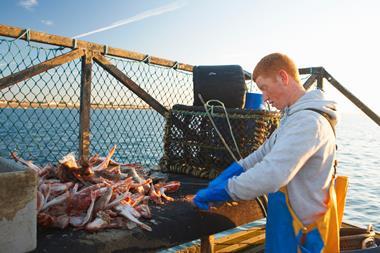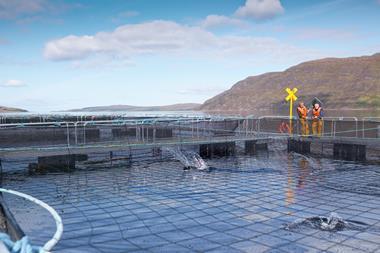Industry unlikely to sustain feed rises as easily as sectors with higher margins'
Minimal marine impact but wild salmon a worry
Relocation of some salmon farms away from wild salmon rivers could form part of the Scottish Executive's aquaculture strategy in the light of a new report.
Review and Synthesis of the Environmental Impacts of Aquaculture has been published by the Scottish Executive Research Unit.
The document, by the Scottish Association for Marine Science and Napier University, was immediately seized upon by anti-farming campaigners for material that could be construed as damning, with extracts e-mailed to the media.
The report does state that "the rate of escapes of farmed salmon is probably unsustainable and represents a major threat to wild populations" due to interbreeding and the risk from infective larval sea lice.
But, broadly speaking, this influential analysis gives favourable conclusions about the impact of the industry.
The effect of the cage footprint is "generally confined to the local area... and the total area of seabed used for this purpose is insignificant in terms of the total coastal resource".
And "the sporadic data that do exist do not show conclusively that there has been a wide scale increase in the abundance of organisms responsible for Harmful Algal Blooms in Scottish waters".
Furthermore, "only a few sea loch sites are strongly enriched with nutrients to such a level that they might exceed environmental quality standards. Models have shown that the algal production attributable to fish farm nutrients in Scottish coastal waters is small in relation to that generated by marine and terrestrial nutrient inputs".
But the report stresses the need for much more research.
Scottish aquaculture's expansion is less likely to be hindered by lobbyists than by a shortage of fishmeal and fish oil.
Scotland, the report notes, is a very small component in the global aquaculture field and could be badly affected by global trends. With industrial fisheries set to stay static in volume, "the Scottish industry is probably running at very low profit margins and is unlikely to sustain fish feed price rises as easily as sectors with higher margins of profit".
{{MEAT }}
Close menu
- Home
- Retail & Wholesale
-
Products & Suppliers
- Back to parent navigation item
- Products & Suppliers
-
Product Categories:
- Back to parent navigation item
- Product Categories:
- Alcoholic drinks
- Bakery
- Cereals & breakfast
- Cheese
- Chicken & poultry
- Chocolate
- Confectionery
- Crisps, nuts & snacks
- Dairy
- Fish
- Fresh produce
- Frozen
- Household
- Meat
- Own Label
- Sauces & condiments
- Seasonal
- Soft drinks
- Vaping
- Vegan & plant-based
- World foods
- Suppliers
- People
- Reports & Data
-
Topics A-Z
- Back to parent navigation item
- Topics A-Z
-
Popular topics:
- Back to parent navigation item
- Popular topics:
- Cost of living crisis
- Crime
- Deposit Return Schemes
- Finance
- Government & Regulation
- Health
- Inflation
- Loyalty
- Marketing
- Mergers & Acquisitions
- New Product Development
- Sourcing
- Supply chain
- Sustainability & environment
- Technology
- Ultra Processed Foods
- Vaping
- A-Z all topics
- Content by type:
- Events
- Ask iA (beta)
- Subscribe now
Sign in to comment on this article
Not logged in before? Register for FREE guest access today.
You will be able to:
- Read more stories
- Receive daily newsletters
- Comment on stories
Advert



















No comments yet